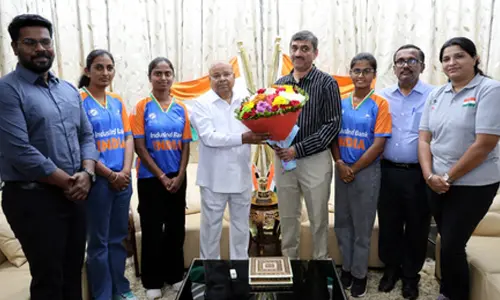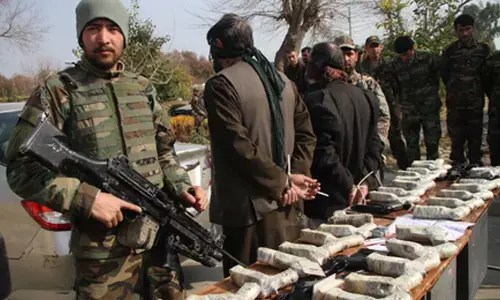Indo-US ties to see greater convergence

Indo-US ties to see greater convergence, Being invited as the chief guest at the Republic Day and witnessing the parade is only the ceremonial side of a significant India visit by US President Barack Obama.
Being invited as the chief guest at the Republic Day and witnessing the parade is only the ceremonial side of a significant India visit by US President Barack Obama. The real objective, it would seem, is to be in the most populous and important South Asian nation that the US sees as part of its ‘pivot’ in Asia.
India, traditionally, has invited its Republic Day guests from countries with whom it has close strategic relations. Thanks to the fluctuating Indo-US relations, it took India over six decades to invite the head of the world's oldest democracy to participate in a ceremony marking its emergence as a full-fledged constitutional democracy.
This, too, seems to be on the spur of the moment when Prime Minister Narendra Modi broached the idea when the two met on the sidelines of East Asia Summit (EAS) in Myanmar in November last. That such a summit in a strategically important Asian nation became the nursery for the Obama visit taking place by itself is significant.
Obama comes when NATO forces have formally quit Afghanistan and there is much to be done there, not just to keep the Taliban and their backers in Pakistan at bay, but also help the Afghans further in their difficult nation-building task. While India’s interests in countering Taliban-ISI converge with those of the US, the latter wants India to continue to play a key role in holding the Afghan hands. This is a task in which India has done well over the last 13 years, putting two billion dollars. This, in a way, is the US’ recognition of India’s role in a peaceful and prosperous Afghanistan, something others, except Pakistan, will feel comfortable with.
Contrast this with the US attitude towards Pakistan, even as Islamabad’s key help is sought and secured in completion of NATO withdrawal from Afghanistan. A billion dollars is the latest tranche of aid from a huge sum coming Pakistan’s way. Simultaneously, the US has taken the unusual course of warning Pakistan against fomenting or facilitating any action that would vitiate Obama’s India visit. Also significant is the American whip that has forced Islamabad, after days of foot-dragging, to ban the Jamaat-ud-Dawa and the dreaded Haqqani network. On this, too, the Indian and the American geopolitical interests converge fully. Going back to the EAS, Myanmar is where India and China come face to face. China is also a factor with Pakistan and the oncoming developments in Afghanistan.
This is a region where Japan, Australia and other allies of the West are deeply concerned. Southeast Asia also sees China as the proverbial elephant in the room, what with Beijing’s territorial disputes with many of them. How far the US would like China to be ‘contained’ and in this, what role Sri Lanka, that has just witnessed an abrupt regime change, could play is something that would need watching by India that itself would like to retain its strategic autonomy.














